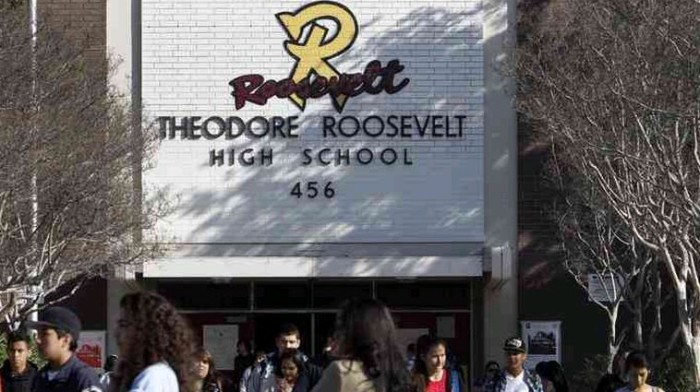
If Jeimy Carrasco had $50 million, she would remake Roosevelt High School into a place of smaller classes and stronger student-teacher relationships, and put an end to droning lectures and dry textbooks in favor of more active learning.
Adriana Meza at Lincoln High would bring in salad bars and more college counselors. Viviana Martin Del Campo would remove police from Central High and bring in more restorative justice coordinators trained to help students change their behavior, not just punish them.
The ideas of these three Los Angeles students could become more than wishful thinking. They now have a chance to add their voices to a $50-million national competition to redesign American public high schools that was officially launched Wednesday by Laurene Powell Jobs.
XQ: The Super School Project is calling on teams of educators, students, civic leaders, artists and others to create high schools that foster dynamic learning, critical thinking, intellectual flexibility, collaboration and other skills needed for the modern world. The current high school model was developed a century ago to produce factory workers and hasn’t changed much since, said Powell Jobs, whose husband, the late Steve Jobs, fostered out-of-the-box thinking at Apple.
A recent analysis by The Times of new California state test results found the racial and ethnic achievement gap had widened since two years ago, with whites and Asians scoring progressively higher than Latinos and African Americans.
“We cannot build schools of the future unless they serve all students,” Ali said. “We are helping to restore the promise of our public high schools to become the great equalizer they were intended to be.”
Decades of educational research have identified major problems with many high schools, along with proved reforms, according to Linda Darling-Hammond, faculty director of the Stanford Center for Opportunity Policy in Education.
She said that schools of thousands of students who are shuffled from class to class and often tracked based on perceived ability levels have too often become dropout factories. But smaller campuses featuring personal relationships with highly trained teachers and learning made relevant through community projects and career training have produced higher achievement, even in low-income, minority neighborhoods, she said.
Source publication: Los Angeles Times